Until two years ago, only businesses and creators with a lot of time and money could create quality video content. Unlike text posts, after writing the text, you need to record the video, edit it, create thumbnails, and do a laundry list of other things.
You either needed to be a jack of all trades to handle these tasks or hire a team to help you.
But AI flipped the script. While those doing it manually are still stuck in the scripting phase, clever solo creators are using AI to flood feeds with quality videos in a fraction of the time.
In this post, I will show you how successful creators are using AI, the top AI tools and workflows for creating videos with AI, and how you can replicate what they are doing to get more views, engagement, and followers.
You might want to hurry and extract the most out of AI for two reasons.
-
Temporary algorithm shift: Right now, most social networks and video platforms have modified their algorithms. Your follower count isn’t as important as it once was. Social networks are showing your posts more to non-followers if their algorithms think they will like it. So, even people with zero followers can go viral if they create the right videos with AI.
-
Less competition: Many say they are good at AI, but only a small percentage of creators have cracked the code on using AI to create addictive content. So, there’s a window of opportunity for you to get in on the action and generate maximum views and followers before they too figure things out and draw away your viewers.
Take advantage of this algorithm shift and the low competition right now, before more people join and ruin it…
The Current State of AI Among Creators
A whopping study from YouTube found that 92% of creators are using AI already. 29% of creators say that it saves them time, while 26% say that it helps them create better quality work.
If you are still creating content manually, you will struggle to beat these creators. In the time it takes you to create 1 video, they will probably create 5 to 10 videos and go viral more often.
Isn’t That Risky Because Platforms Punish AI-Generated Content?
The recent AI update from YouTube has sent shivers down the spines of many creators.
Many are trying to figure out what’s better. Wasting a whole weekend to edit a 3 minute video, or just risking it and creating content with AI, while constantly looking over their shoulder?
But as YouTube assured its users, there’s nothing to fear.

They just made a minor update to an existing rule, “when content is mass-produced or repetitive”.
In fact, YouTube encourages you to make videos with AI. They recently introduced a new feature that allows users to quickly whip up shorts with AI. And they have also been editing existing videos with AI.
Even other social platforms, such as Meta (Facebook and Instagram), and TikTok, are introducing AI features to attract more users to their feeds.
AI makes it easy for more people to post better-quality content more often. And that’s what most platforms want. YouTube wants you to thumb through shorts on their platform instead of Reels on Instagram. Instagram wants to watch more Reels instead of TikTok videos.
If they penalized AI content, then trends like the Bigfoot ape videos wouldn’t exist.
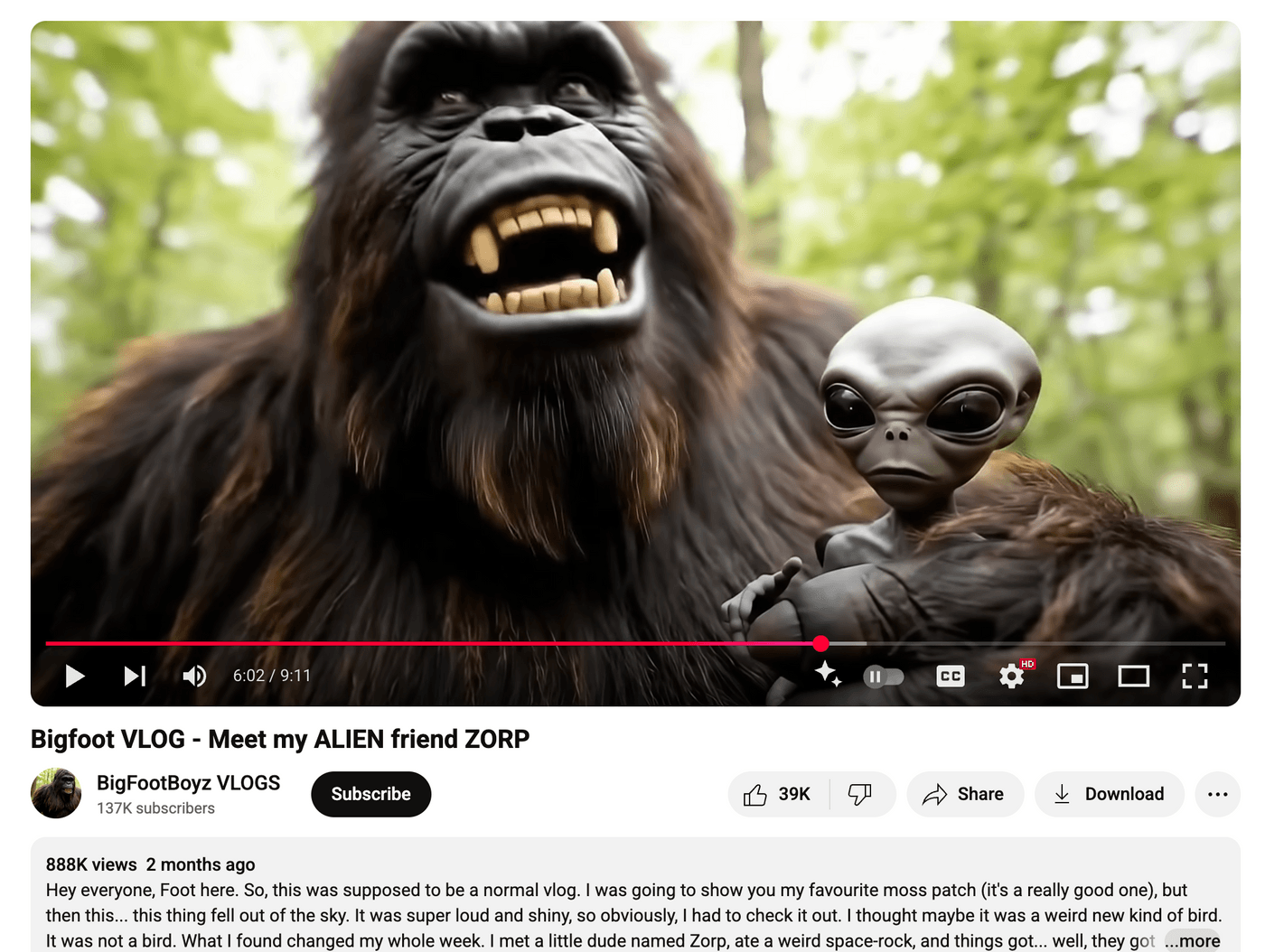
However, be cautious when creating video content that is entirely AI-generated. If you create an AI voice or an Avatar clone of yourself or a celebrity that appears very realistic, you need to use the labeling option to inform networks and viewers that you made the video with AI.
Check our blog for more DOs & DONT's that can help you avoid being banned by YouTube.
But Will People Watch AI-generated Videos?
Right now, the views on AI content, especially for video generation, are mixed.
Some people draw up their guard against AI-generated content, but more and more people are watching them, as AI content generation goes mainstream.
Netflix recently admitted to using AI-generated videos in The Eternaut series, and James Cameron also revealed that he wants to use AI.
As major players with an established audience use AI, more people will warm up to your AI videos, too.
Now is the best time to get involved and make the most out of AI-generated content before more people join in on the BOOM. They’ll crowd the internet with more AI content and make it harder for you to draw eyeballs.
People frequent social media when they’re bored and want a break. Of course, some of them want more educational content. They don’t care if it is AI-made or human. They just want something better, otherwise, the Bigfoot video trends wouldn’t exist.
Videos like that go viral because people watch them, like them, and tell all their friends how they made them laugh.
Of course, this type of content gets repetitive after a while. So, creators who use AI to create more unique content and invent new trends themselves are faring a lot better.
How Successful Creators Are Winning With AI?
Here are some ways small and big influencers are using AI
The Cheeky Celt
New YouTubers sacrifice nights and weekends in hopes that they will get monetized and start earning a piece of the action like their favorite creators.
However, less than 2 million channels out of 115 million have achieved this feat. For most, it takes many months and even years for all those sleepless nights to pay off.
But not for The Cheeky Celt. This channel got monetized within 2 months.
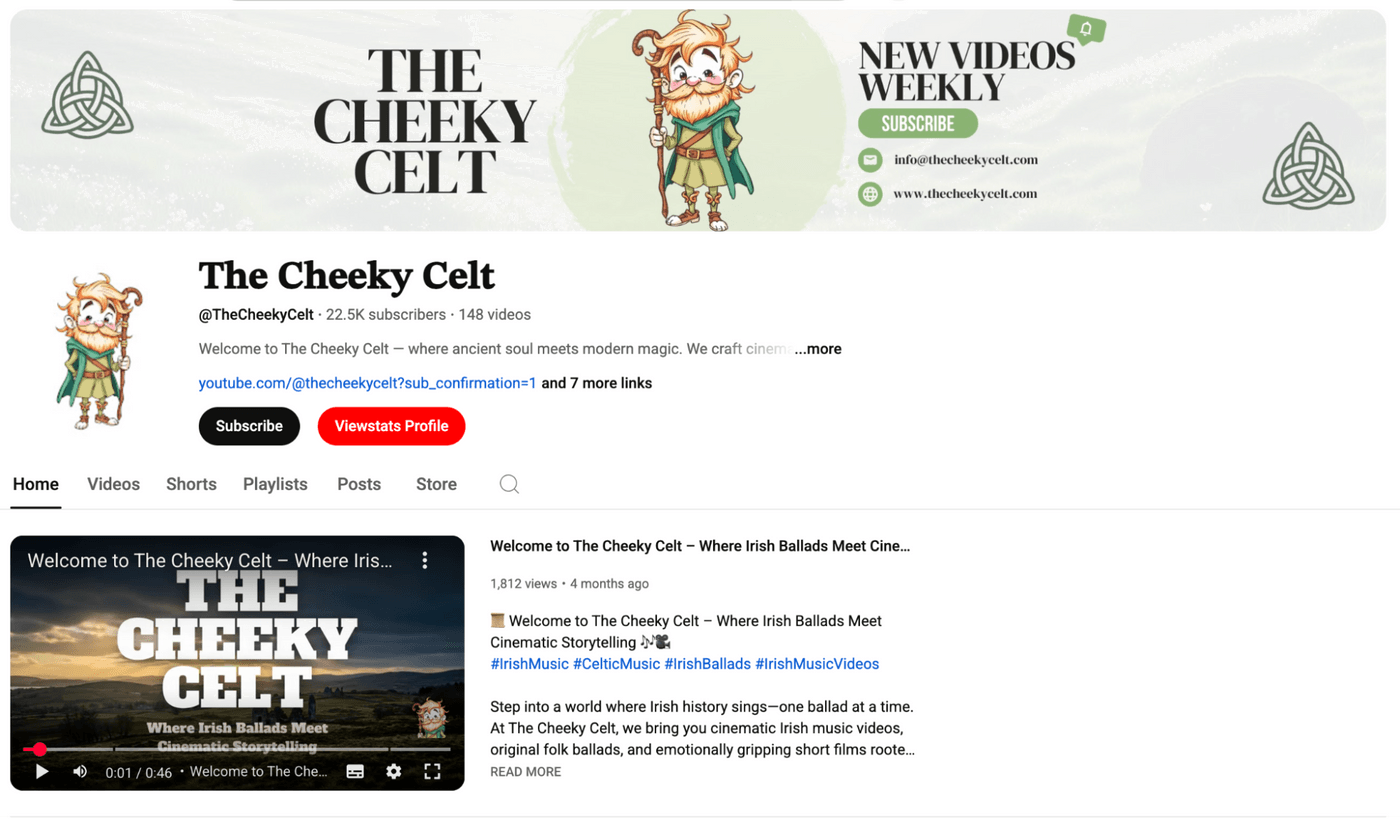
The channel is just 6 months old, but has already created over 148 videos, which have gotten over 2 million views. And the best part is that it is faceless, run by someone who is not a professional YouTuber.
This newbie creator with very little time was able to do this because AI tools like invideo, Suno, and ChatGPT made video creation easy.
Matt Parr
Matt Parr, a YouTuber with over 850,000 subscribers, used to pay scriptwriters, video editors, and voice creators $300 to create one video.
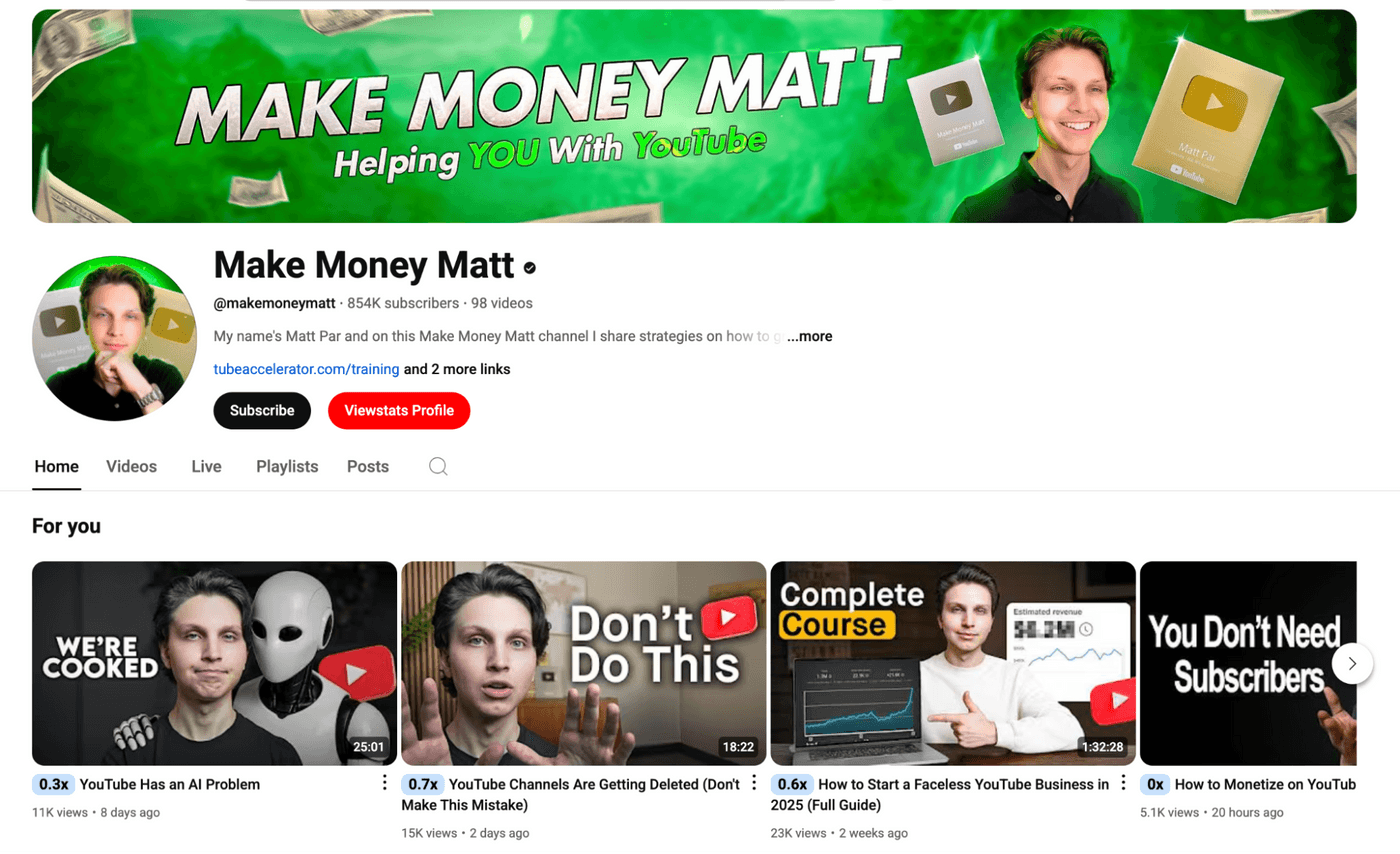
But now he is automating all those roles with AI, and is able to create a YouTube video in one hour instead of six hours.
He is using AI to come up with video ideas, write scripts, create background videos, edit videos, write titles and descriptions, and generate voices and thumbnails.
Along with his channel, he also runs 12 faceless YouTube channels, and he’s generating $20,000 to $35,000 per month from YouTube ad revenue.
Top AI Tools Creators Are Using to Create Videos
Here are some top tools creators are using to make videos…
Ideation and Scripting AI Tools
ChatGPT

ChatGPT is probably the best all-around AI tool. Many creators use it for writing titles, scripts, and descriptions, but its best purpose is in analysing information. If you feed it data like your social media analytics, it will analyze it and give you better suggestions than a human could.
This can work great for figuring out the highs and lows of your social media marketing efforts and the next steps you need to take.
Claude

ChatGPT does a fine job at text generation, but it is nowhere near the level of Claude. This platform is miles ahead in creative writing. It reads a lot like a real human wrote it.
The top creators use both ChatGPT and Claude to write their content. ChatGPT helps them analyze things and offers suggestions, and then they prompt Claude with the data to generate better output.
Perplexity
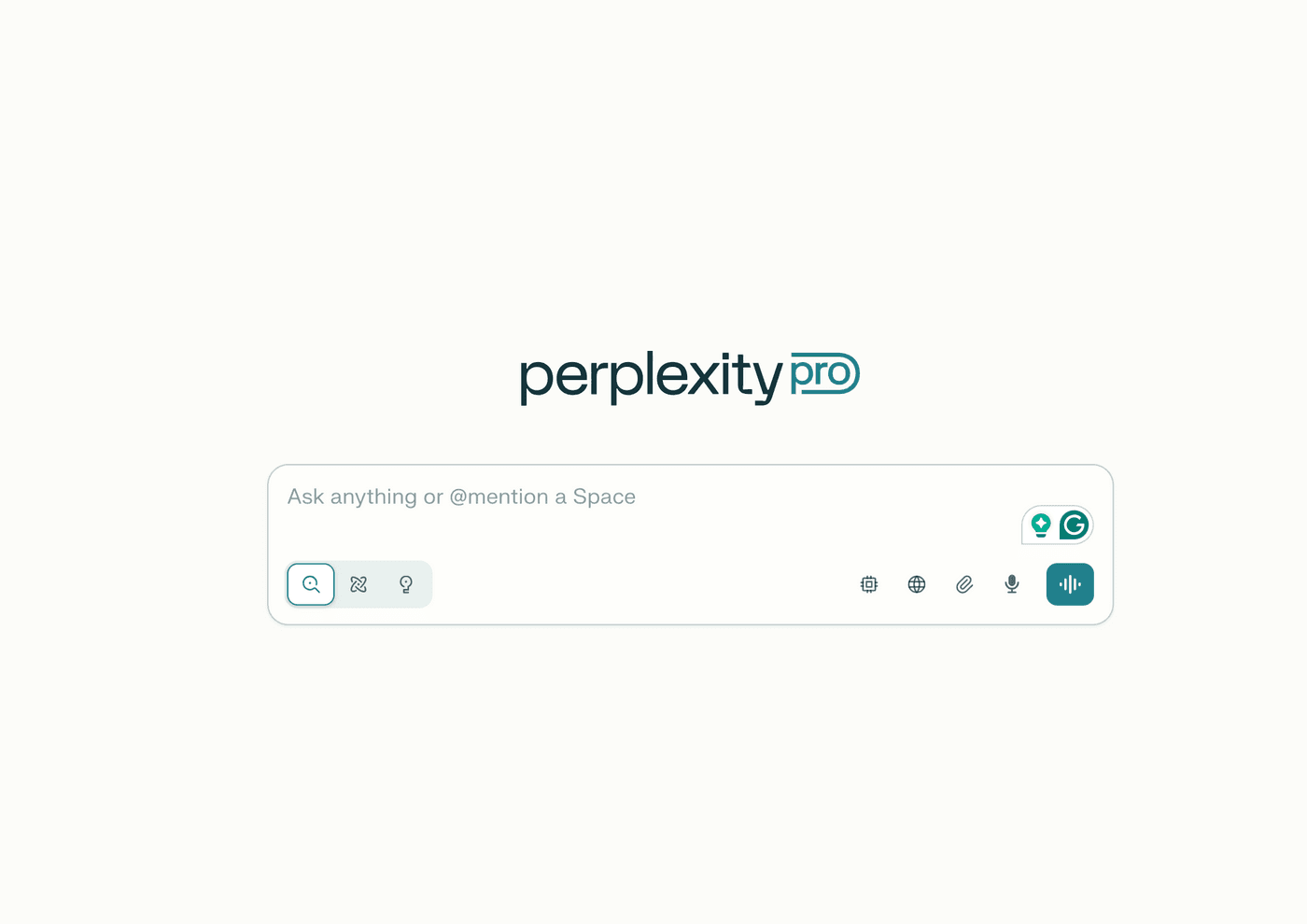
What’s the point of Perplexity if you already have ChatGPT and Claude?
Perplexity might not be as good a writer as either of these software, but it’s in first place for research.
It’s been able to dig its claws into the internet before ChatGPT and Claude, and it knows nooks and crannies with the best information. You can use it to create customer avatars, spot social media trends, and so much more.
Video Generation Tools
Invideo AI
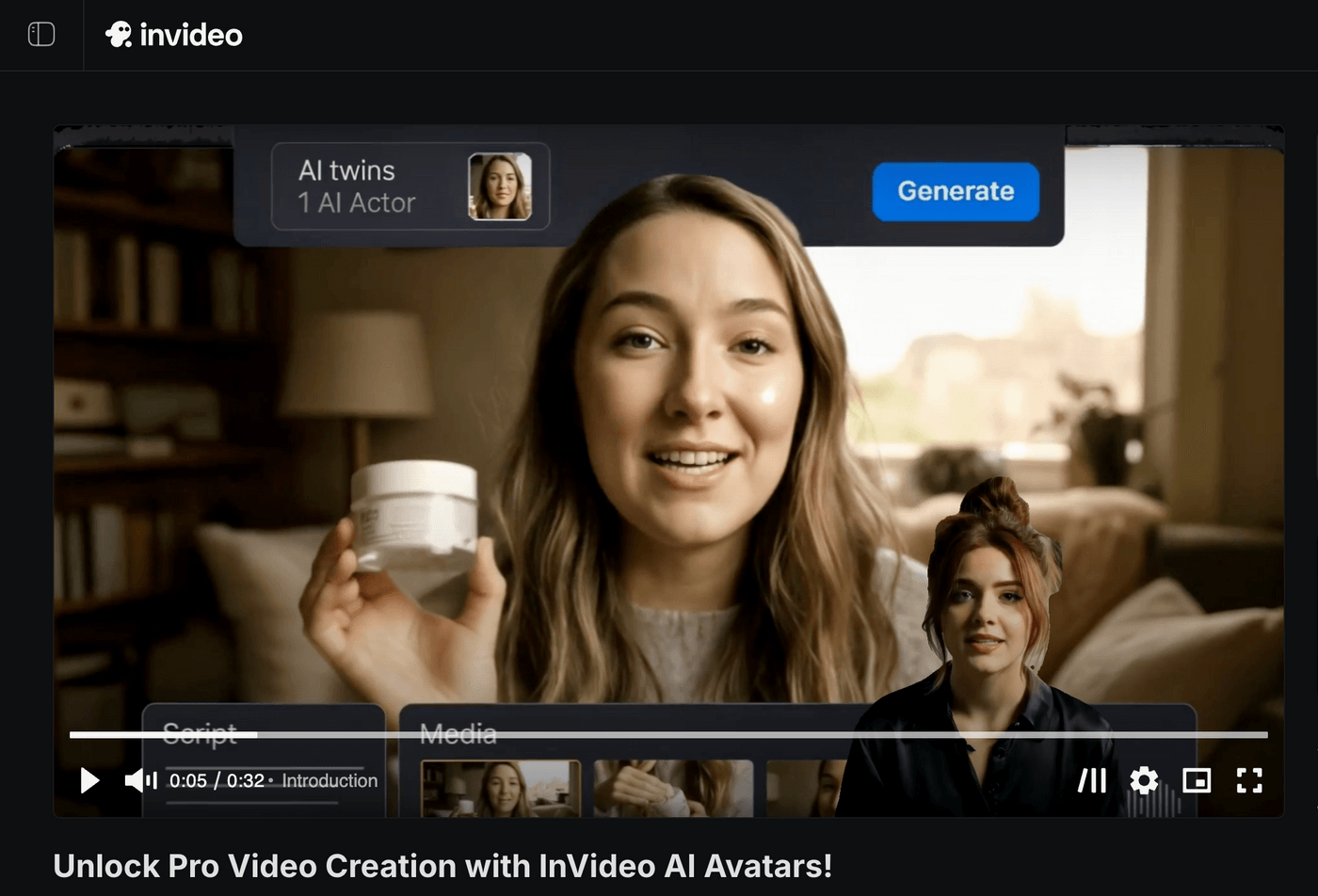
Invideo is the most complete AI tool for video content creation. Creators with zero video creation experience can use it to create videos from their homes at a fraction of the cost. It helps you generate AI images, voices, and videos. These include AI avatars, voice clones, generative clips for b-roll, UGC ads, and so much more.
After you create everything you need with AI, you can use its online video editor to assemble the video and edit it. If that’s not enough, you can also use templates for top platforms like YouTube, TikTok, Facebook, and Instagram to simplify things even more.
Creative Cloud
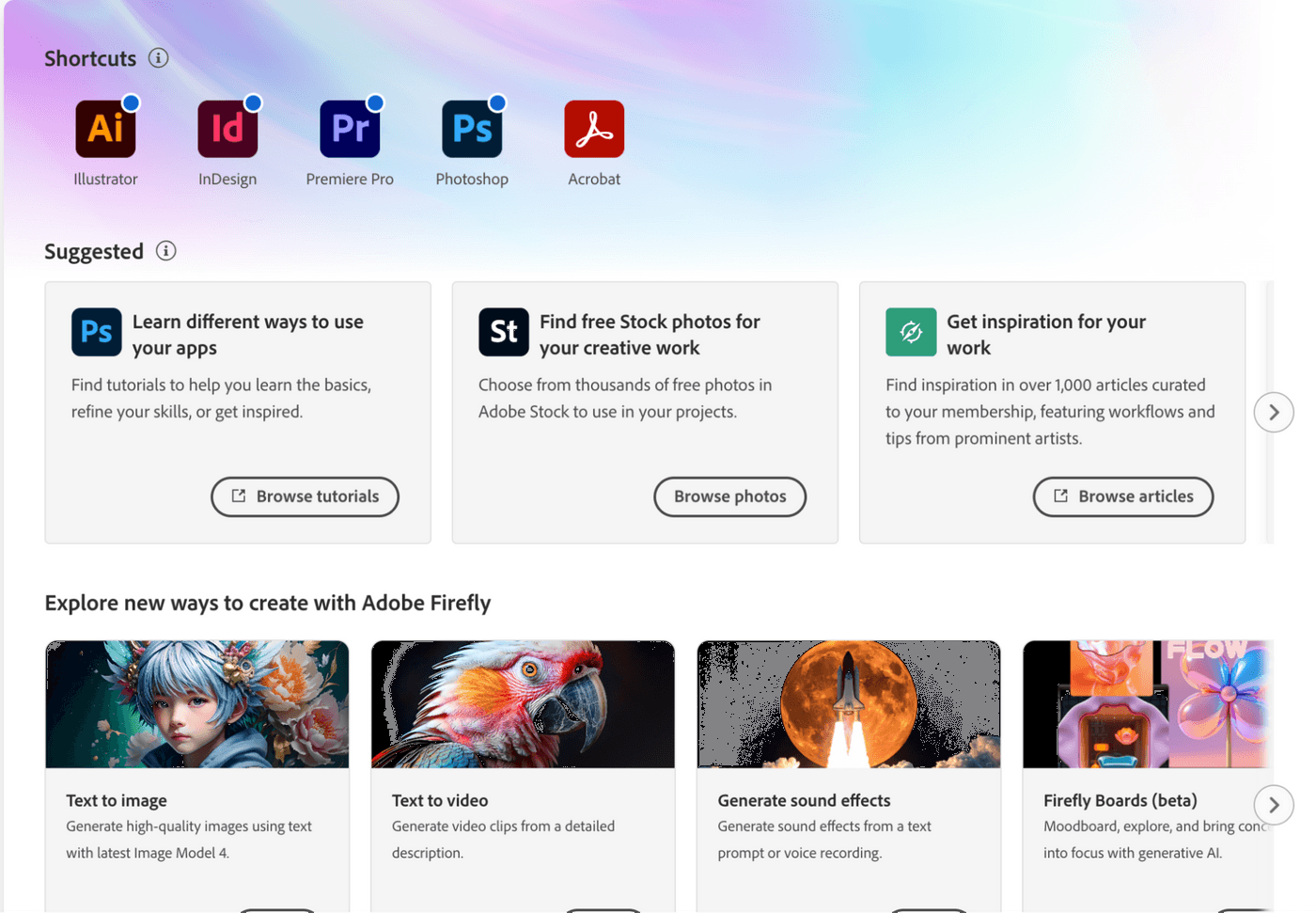
Adobe Creative Cloud has done a great job at integrating AI features into most of its tools, like Acrobat, Premiere Pro, Photoshop, and Illustrator.
It also created Firefly, which can generate images from text. The best part is that you can use the tools together to combine image generation, photo editing, audio editing, and video editing.
The biggest problem with it is that it can be heavy on your wallet.
Editing and Production Assistance
Descript

Descript is a video editing platform with an emphasis on podcasts. Its standout feature is the text-based editor. It transcribes speech from the video so you can use a Google Doc-like interface to edit videos by deleting text.
It can clone voices, too. So, if you add new words to the transcript, it will conjure your voice. There’s also a timeline editor for users who prefer the traditional way.
If you don’t want to spend any time editing, you can also use the automatic editing feature. This is mainly for cutting longer podcast videos into short ones. You simply tell it to find clips from long recordings that will do well, and it will automatically extract them.
OpusClip
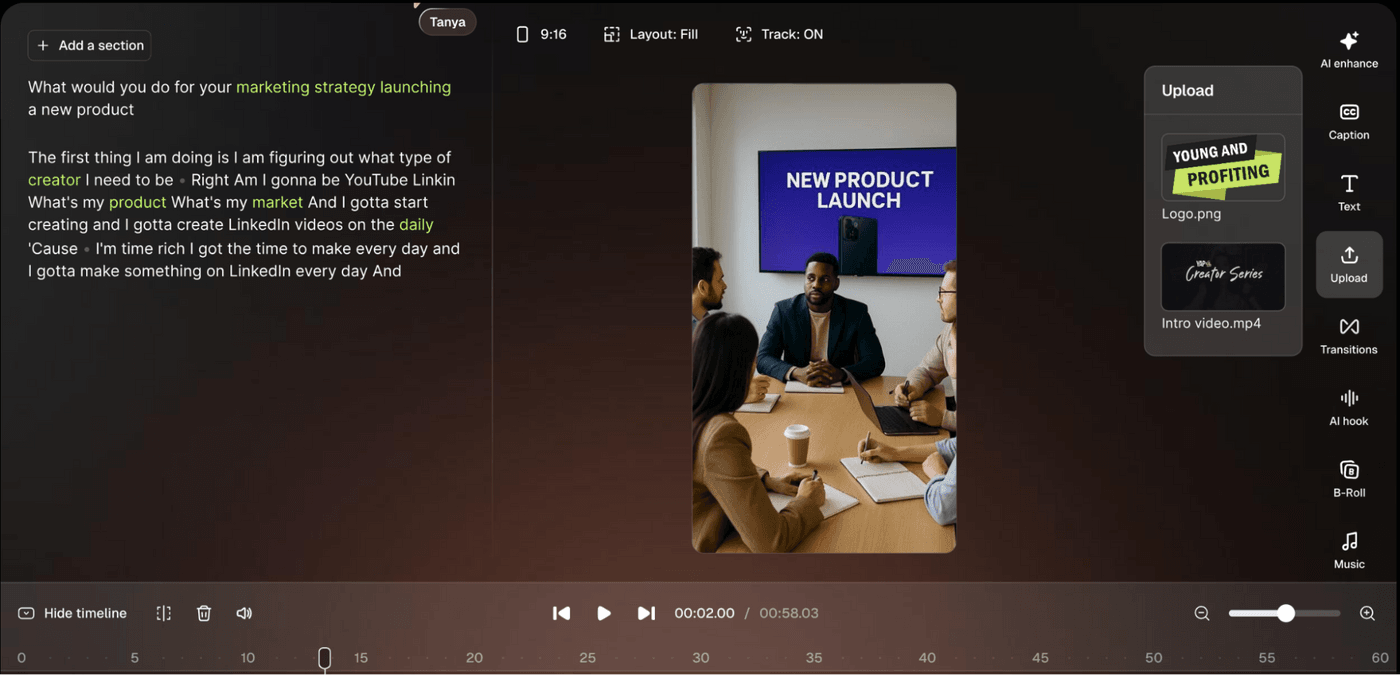
OpusClip automates clip creation with AI. You simply upload your full video, and its AI will automatically cut out the best clips. You can also use it to generate B Roll footage, captions, thumbnails, and directly schedule your new clips to the top social networks.
There’s also a text-based editor for those who want a more hands-on approach.
Opus Clip also offers analytics that let you see how well your videos are doing.
These are the different tools creators are using.
Some of them are using them individually with a lot of human intervention, while others are bridging them with tools like Zapier, Make, and n8n to automate things even further. However, this comes with its risks, which I covered later in this article.
Where AI Can't Beat Humans?
AI can assist in creating great content, and new tools and solutions are popping up every day to automate the process even further. This is where most people mess up.
They are giving it more control. However, you want to treat AI as a sidekick that’s helping you out, not as a CMO that’s making complex decisions.
Here are some common mistakes you shouldn’t make while using AI…
Automating Things Fully
Ask any AI expert what the biggest problem with AI usage is?
I bet that most will point at hallucinations.
Hallucinations are when you ask AI to provide you with an output, but along with what you asked it to give you, it makes up things that don’t exist.
Hallucinations are getting worse even though the models are getting better.
If you don’t check for hallucinations and other mistakes from AI, you could end up like the Chicago Sun Times. It published a piece on 15 books to read.

Do you know what the craziest part about it was?
Only 5 of them were real. AI hallucinated the rest.
This is an established magazine with a team of editors, and they still somehow messed up.
Now that you know this, you would probably think twice before you read another article from the Chicago Sun-Times, won’t you?
The same will happen with you and your content if you let AI run the show and cook up things that don’t exist.
This is why human intervention is vital at every step.
Using AI for Ideation
One area where AI still struggles is generating unique ideas. When AI suggests an idea, it is usually based on something someone else created, because that’s how these LLMs have been built.
Most people are just taking competitors’ ideas and rewriting new posts around them. This is why most social media feeds read the same these days.
Have you noticed this?
So, brainstorming new ideas is probably the most important thing right now. You can use AI to help you with research, but you need to come up with ideas by yourself. AI is also great for rating the originality of your idea.
The ideas that are working best right now are those centered on personal stories, as stories are unique.
There will come a time when AI is better than humans at ideation, but until then, we have to do most of the heavy lifting.
Lazy Prompting
Most people use LLMs like search engines. They ask a question and it gives them an answer. But LLMs don’t work like search engines. To get the best response, you need to offer more context. This could be whether you are searching for an answer, asking AI to write something, or analyze some data.
Think of AI as an intern on the first day at the job. When you give instructions for a new task to an intern, you tell them how to do everything step by step. Maybe you even record a Loom video they can use.
In a similar way, every time you prompt an LLM, you need to include why you are asking it to do this, what the objective is, background info about the market or niche, who this is for, and also share examples if necessary.
Not Creating a Brand
AI is making it easy for anyone to create content. There’s more content than ever today. People are spoilt for choice.
So, why should they choose to watch your video over your competitors?
Most people are not giving them this reason.
The best way to do this is by building a brand, especially a personal brand. People will then want to watch your video because they like and trust you and enjoy listening to your unique voice.
So, create an audience persona and then build a brand that your audience will fall in love with. The branding and voice should include a personality, words you repeat regularly, writing style, consistent colors, and various other things that your audience can easily recognize.
You don’t want to just reflect this brand and personality in the content you create, but also while building the community.
Actionable Steps to Get The Most Out of AI
Here’s how you can get the most out of AI…
Become The Strategist
AI can handle most creation and marketing-related tasks, as illustrated above. However, if you randomly tell it to do something, it can’t start from scratch and give you a consistent end result.
There needs to be a master pulling the strings. So, become the master who creates the strategy and oversees everything.
You want to learn about things like audience research, auditing, creating original content, understanding platform algorithms, analytics, and putting all of this together to create and run a strategy.
Define And Develop a Brand
The most important thing in a world full of AI content will be your brand. We choose to watch content from people like Mr Beast, Khaby Lame, Zack King, and PewDiePie, not just because the content is good, but also because they have built a unique brand.
Source: Zach King
Your target audience needs to find your brand so appealing that they look forward to your videos in their feed every single day.
If you are creating a faceless channel, you will need to create a brand around the voice or the characters you use in your video, and if you are the character, you can build a brand around yourself.
Go Out of Your Way
Another way to stand out from the competition and get the most engagement and followers is by going out of your way to create better content than everyone else. Before you create any piece of content, check out similar content your competitors have put out.
Then look for content gaps and other deficiencies in their content and create unique content that fills these gaps.
Always ask yourself questions like…
-
How can I make my idea better?
-
How can I improve my hook?
-
How can I improve my text to increase retention?
-
How can I have a CTA that gets them to take action?
Create Your Own Workflows
Many people today understand how to use LLMs and other AI tools individually and are getting the most out of them. But outliers are gaining more by developing workflows to get the most out of them collectively, without worrying about issues like hallucinations and generic outputs.
So, start developing your own workflows that will help you do more in less time. Of course, make sure that you intersperse every step with human intervention to minimize hallucinations.
1-Hour Workflow For Making Viral Videos (Even As A Newbie)
Use this to consistently fill your feed with high-quality video content and to also fill your competitors with envy.
If you are completely new, it should take a couple of hours.
However, after you try it a couple of times, you should be able to consistently produce multiple videos in under an hour without burning out or hiring a team.
Brainstorm a Viral Idea (5 to 10 minutes)
Your unique idea needs to come from you, as humans are better at this. However, you can use Perplexity to help with research. Treat it like an intern and give it an extremely specific prompt, such as which competitors to analyze, which social networks to check for trends, and the audience you want to target.
It will rummage through the internet and share raw information in 3 to 5 minutes. You can use this to brainstorm 5 to 10 ideas.
You can then feed these ideas to ChatGPT and get it to pick the top one to three.
Write Your Script, Title, and Description (15 minutes)
After you choose an idea, you can put ChatGPT or Claude to work and come up with a video script, title, and description. Either will write it in less than 5 minutes, but you might want to spend some time giving feedback to your LLM and getting it to regenerate a better script.
Once finished, you should also edit your script and modify it to suit your voice, and also generate a relevant title and description.
Create Visuals and Voice-overs (15 minutes)
This might seem like the hardest part, but it is actually pretty straightforward thanks to invideo. You simply feed it the script and use one of the existing voices or clone your voice and generate the voice-over almost instantly.
Creating the AI-generated visuals and videos is also pretty simple. You simply type in a few lines of text, and it will give you what you want.
Edit (10 minutes)
This is probably the most mind-numbing and time-consuming part of editing a traditional video. But because of text-based AI editing tools like invideo, you can edit your video in a small fraction of the time. It feels just like editing an article in a Google Doc.
Once you create your long-form video, you can also use Descript or Opus Clip to create several shorter versions.
Create Thumbnails (5 minutes)
Simply instruct invideo to use the script, video footage, and images you have already provided to create a thumbnail, and it will automatically generate a scroll-stopping thumbnail.
Publish (2 minutes)
This is the easiest part. You can either do it manually or use a tool like Opus Clip, Descript, or Buffer to schedule content.
You Don’t Want to Regret This Temporary AI Video Opportunity
Choosing to create your videos fully by hand or with the help of AI can seem like a hard decision.
It’s not that you can’t create successful videos without AI, many creators still do that.
However, they have to put in a ton more time and effort.
If you want an easier way to create videos as good as someone more experienced than you in a fraction of the time, you need to embrace AI immediately.
There is a window of opportunity that you can take advantage of right now. Only a small percentage of people on the internet are using it to the fullest, either because they are too proud of their skills or have no idea what they are doing.
These people will soon realize what they are missing out on and start using AI with full force. But until that time comes, you can use AI to create better content than they can and build your brand.


